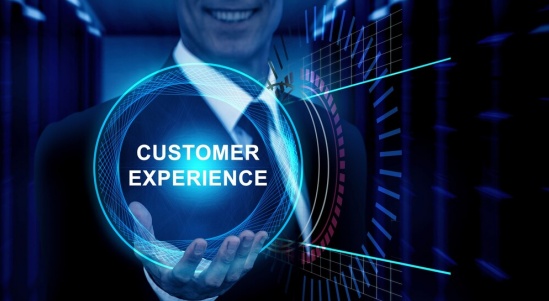- Resources
- Customer Engagement Platforms: Everything You Need to Know
Customer Engagement Platforms: Everything You Need to Know

In the digital age, customers expect more than just a phone line or an occasional email to communicate with brands. They demand a seamless, omnichannel experience that allows them to interact with businesses across various platforms, including text, mobile apps, web chat, and social media messages. In fact, a staggering 66% of consumers want to engage with brands through messages, and 74% of people have more than five apps open simultaneously.
Imagine a customer reaches out to your business via social media, but your team focuses solely on phone calls and emails. Chances are, you’ll miss out on that opportunity, and the customer will move on to a more responsive competitor. This is precisely why relying on a phone line as the primary customer communication channel can harm your business’s growth and customer relationships.
However, there’s a solution that can help you deliver seamless customer communications – a customer engagement platform (CEP). With a CEP, you and your team can communicate with customers through multiple channels such as phone, message, social media, web chat, and more, all from a single app.
In the following sections, we’ll dive deeper into customer engagement platforms, exploring their features, benefits, and how they can revolutionize how you interact with your customers. Continue reading!
In this article, we will explore:
- 1. What is a Customer Engagement Platform?
- 2. Why Do You Need a Customer Engagement Platform?
- 3. How Does a Customer Engagement Platform Work?
- 4. Key Features of a Customer Engagement Platform
- 5. Benefits of Using a Customer Engagement Platform
- 6. How to Choose Best Customer Engagement Programs: What to Look For
- 7. Best Customer Engagement Platforms (CEPs) for 2024
- 8. How to Elevate Customer Experience with CEPs
What is a Customer Engagement Platform?
A CEP is a collection of technology solutions to manage and optimize customer interactions across numerous channels and touchpoints. Consider them a CRM, support desk, and communication platform hybrid.
CEPs refer to various systems that allow firms to measure, monitor, and support engagement to foster customer loyalty and drive business growth. For example, you can:
- Recommend a product that customers may find appealing, drawing upon their previous purchases.
- Direct a consumer to a guide in your company’s knowledge base to help them address their problem.
- Give specific directions for finding a feature based on the program version they’re using.
- Ask a customer for feedback on a recent customer support ticket.
These platforms serve as an all-in-one contact center for handling all communications with those outside of your company. They also allow you to provide a consistent experience for buyers when they interact with various touch points along the customer journey.
Difference between a CEP, CRM, and CDP System
CEPs, Customer Relationship Management (CRM) systems, and Customer Data Platforms (CDPs) serve distinct but interconnected purposes in managing customer interactions and data. While CEPs emphasize engagement, CRMs prioritize relationships, and CDPs concentrate on data aggregation and analysis for enhanced customer understanding and targeting.
Let’s understand the differences in their functioning in a little more detail:
| Aspect | CEP | CRM | CDP |
|---|---|---|---|
| Focus | Facilitates customer interactions | Manages customer relationships | Centralized customer data |
| Functionality | Includes marketing, sales, support | Focuses on sales, marketing, support | Focuses on data collection, analysis |
| Channels Supported | Multiple channels (email, social, etc.) | Mainly sales and customer service channels | Data from various touchpoints |
| Data Usage | Real-time engagement and analytics | Historical interactions and sales data | Aggregate and unify customer data |
| Scope | Broad customer engagement | Specific customer interactions | Comprehensive data management |
| Integration | Integrates with CRM, analytics, etc. | Integrates with marketing, and sales tools | Integrates with various data sources |
| Use Cases | Marketing campaigns, customer support | Sales pipeline management, customer service | Personalization, segmentation |
Why Do You Need a Customer Engagement Platform?
A CEP that consolidates interactions from various channels into a unified narrative helps you provide your customers with a cohesive and consistent experience. By doing so, you can ensure that every customer interaction, regardless of the channel, aligns with their unique journey, fostering trust and satisfaction.
Here are a few more reasons why investing in a customer engagement platform is a no-brainer:
Data-Driven Decision-Making
In the era of big data, customer engagement platforms empower you with actionable insights derived from customer data. With robust analytical capabilities, you can uncover patterns, trends, and behaviors that inform critical decisions related to customer service, product development, and marketing strategies. By understanding your customers at a fundamental level, you can anticipate their needs and deliver solutions proactively, moving from a reactive to a proactive engagement model.
Operational Efficiency
Automation is the key to streamlining workflows and optimizing operational efficiency. Customer engagement platforms automate routine tasks, such as sending promotional emails, following up on service tickets, or routing queries to the appropriate department. This automation frees up your human agents to focus on more high-value interactions, ensuring that customers receive the attention they need promptly and efficiently.
Foster Long-Term Relationships
Customer engagement platforms are a powerful tool for building long-term customer relationships. You can foster a loyal customer base by consistently providing exceptional service and personalized experiences and demonstrating a deep understanding of customer needs. This loyalty drives repeat business and can turn customers into advocates who share their positive experiences with others, amplifying your brand’s reach and reputation.
Personalize at Scale
Mass personalization is no longer a luxury; it’s a necessity. Customers expect tailored experiences that cater to their individual preferences and behaviors. A customer engagement platform harnesses data from numerous touchpoints, allowing you to gain deep insights into your customer’s needs and preferences. With this knowledge, you can deliver personalized communication and offers that make each customer feel valued, transforming a one-size-fits-all approach into a customer-centric strategy that drives engagement and loyalty.
How Does a Customer Engagement Platform Work?
A customer engagement platform allows you to seamlessly orchestrate interactions across multiple channels from a single unified interface. Let’s understand how it operates with an example.
Imagine a customer named Sarah signing up for your e-commerce service via your website. The CEP captures her information, creating a customer profile. A few days later, Sarah contacted your business with a question through a chat widget on your site.
The chat interaction is automatically logged in Sarah’s profile within the CEP. Based on her question, the system triggers an automated workflow to send her a follow-up email with more information.
Several weeks later, Sarah made a purchase but had an issue with the order. She calls your customer service line, and the agent can immediately access Sarah’s complete history – the initial sign-up, website chat, automated email response, and purchase details – all within the CEP interface.
After resolving Sarah’s issue satisfactorily, the agent sends her a thank-you text message with a discount code for her next purchase directly from the CEP, recognizing her preferred communication channel.
Down the line, Sarah leaves a negative review on your company’s Facebook page. The CEP captures this social media interaction and associates it with her profile. An agent quickly responds, apologizing and offering to make it right, maintaining context from all previous touchpoints.
Throughout this journey, the CEP acts as the connective tissue, integrating all communication channels – web, chat, email, voice, SMS, social media – into a single, unified experience for Sarah and your service agents. This level of seamless omnichannel integration delivers the modern, cohesive experience customers expect while boosting your team’s efficiency and productivity.
Components of a CEP
To understand how a customer interaction platform works, you must first learn its different components. Here are a few of them:
- Data Collection and Integration: Collects data from all customer touchpoints (interactions, browsing, and past purchases.) and integrates with other systems like CRM for a 360-degree customer view.
- Data Analysis and Customer Insights: Analyze aggregated data to uncover customer insights, preferences, and behavior patterns.
- Personalization Engines: Uses personalization engines and algorithms to deliver tailored content, recommendations, and experiences based on insights.
- Omnichannel Coordination: Ensures omnichannel consistency by maintaining context across all channels (web, mobile, social, in-store, etc.).
- Automation and AI: Automates routine tasks and communications and leverages AI/chatbots to handle inquiries efficiently.
- Real-Time Engagement: Enables real-time engagement through live chat, messaging, and social media for immediate responsiveness.
- Continuous Learning and Adaptation: Continuously learns, adapts, and refines algorithms based on new data and evolving customer needs.
Key Features of a Customer Engagement Platform
A CEP is intended to manage and improve interactions between organizations and their consumers via several channels and touchpoints. Let’s look at the important features that define a strong customer engagement platform:
Unified Customer Profile
CEPs consolidate customer data from various sources, including interactions, transactions, and online behavior, into a comprehensive customer profile. This centralized view lets you understand each customer’s unique journey, preferences, and pain points, enabling personalized and contextual engagement.
Self-Service Capabilities
Advanced customer engagement platforms offer self-service capabilities such as knowledge bases, FAQs, and AI-powered chatbots or virtual assistants. These features empower customers to find answers and resolve issues independently, reducing the load on customer service teams and improving overall satisfaction.
Advanced Personalization Capabilities
The platform can deliver highly personalized experiences across various channels by leveraging customer data and AI-driven insights. This includes tailored product recommendations, targeted marketing campaigns, and customized messaging based on customer preferences and behaviors.
Analytics and Tracking
CEPs provide robust analytics and reporting capabilities, allowing you to track key metrics such as:
- Customer satisfaction scores
- Engagement rates
- Conversion rates
- Customer lifetime value
These insights help you measure the effectiveness of your customer engagement strategies and make data-driven decisions for continuous improvement.
Automated Workflows and Campaigns
Customer engagement platforms enable you to automate various processes and campaigns based on predefined rules and triggers. For example, you can set up automated workflows for lead nurturing, customer onboarding, feedback collection, or re-engagement campaigns, ensuring consistent and timely customer communication.
Benefits of Using a Customer Engagement Platform
Approximately 80% of businesses invest in a platform that manages consumer interactions across several media. Are you wondering why you should, too? Here are a few advantages of investing in robust customer engagement platforms:
Improved Communication
CEPs help firms coordinate communication efforts across multiple channels and divisions. This guarantees consistent messaging and branding throughout all client contacts, whether with sales, support, or another department. Such coordination is essential for establishing a coherent brand voice and providing a consistent client experience. It also prevents communication silos and keeps all teams up to date on the latest customer interactions and insights.
Get a Competitive Advantage
Did you know that 39% of CEOs believe customer experience is among the most effective way to gain a competitive advantage? Almost two-thirds of marketers claim their organization competes entirely based on customer experience.
Investing in a CEP enables you to drastically improve the experiences you provide to your consumers through digitalization and automation across several communication channels. Why? Because self-service and digital communication are becoming the most important drivers of customer retention and corporate growth. Like it or not, the future is digital.
Offer a Personalized Experience
One of the most significant advantages of a customer interaction platform is that it enables businesses to boost relevance at every touchpoint through unparalleled customization and insight. It also enables businesses to engage clients exactly, whenever and wherever they choose. Companies may develop tailored journeys at scale by collecting client data and interactions across digital channels on a single platform.
Simplify Communications
A streamlined customer communication process enables your staff to reply quickly to customer requests and inquiries and engage with them at the optimal time for purchasing. Integrating each interaction—voice calls, SMS, web chat, social network messaging—into a single platform allows you to continue discussions across many channels, resulting in a more seamless experience and faster sales cycles. Optimize your marketing ROI by scheduling messages, personalizing content based on prior purchases and interactions, providing timely customer assistance, and managing outreach initiatives efficiently.
Higher Conversion
CEPs help directly to increase conversion rates by providing timely and relevant messaging. Engaging customers with personalized material that reflects their interests and past behavior can persuade them to purchase. CEPs’ ability to deliver the correct message at the right time improves the chances of turning potential leads into sales.
How to Choose Best Customer Engagement Programs: What to Look For
When choosing a CEP, Evaluate the platform’s ability to provide personalized experiences through advanced segmentation, predictive analytics, and AI-driven recommendations. Additionally, consider the platform’s capacity for natural language processing (NLP) and conversational AI, enabling intelligent chatbots and virtual assistants for enhanced customer interactions.
Here are a few more factors that you should consider before selecting a CEP for your business:
Scalability and Flexibility
Evaluate the platform’s ability to scale seamlessly as your business grows, accommodating increasing customer interactions and data volumes without compromising performance or functionality. Additionally, assess the platform’s flexibility to integrate with future technologies or systems you may adopt, ensuring that your investment is future-proof and can adapt to evolving business needs.
Omnichannel Capabilities
Customers expect to engage with businesses across multiple channels, including email, messages, social media, and voice calls. Therefore, choosing a platform that supports seamless communication across all relevant channels is crucial. Look for features that maintain context and consistency across channels, ensuring a unified and cohesive customer experience, regardless of the touchpoint.
Integration and Open APIs
Seamless integration with your existing systems, such as CRM, marketing automation, and e-commerce platforms, is essential for successful customer engagement platform implementation. Prioritize platforms that offer out-of-the-box integration with your current tech stack. Additionally, evaluate the availability of open APIs, which allow for custom integrations and extensibility, ensuring that the platform can seamlessly connect with any future systems you may adopt.
Data Security and Compliance
Verify the platform’s adherence to industry-specific data security and privacy regulations, such as GDPR, HIPAA, and PCI-DSS. Assess the robustness of the platform’s data encryption, access controls, and auditing capabilities to protect sensitive customer information.
Best Customer Engagement Platforms (CEPs) for 2024
Now that you know the factors to look out for when choosing a CEP, here are some common platforms that you can invest in for your business:

Ozonetel
Ozonetel is your one-stop solution to manage all customer communication channels & touchpoints. Ozonetel customer engagement platform makes it a cost-effective choice for businesses looking to enhance customer interactions and streamline communication processes.
The platform helps enterprises engage with customers at every touch point across voice, chat, SMS, WhatsApp, and other digital channels. Here’s how it improves user experience.
Journey Studio: Ozonetel offers a drag-and-drop journey builder that allows you to design customer journeys as per your specific needs. The platform is embedded with AI and NLP capabilities, enabling intelligent and natural interactions with customers.
Data-Driven Insights: Data-driven transformation is the key to long-term growth. With Ozonetel CX platform, you can leverage intelligence gathered from millions of conversations to develop a more customer-centric business plan by better knowing your customers and their demands.
Contextualized Assistance: AI-driven chatbots provide personalized support across channels, including complex queries and product recommendations
Hyper-personalized Experiences: With our GenAI-powered marketing solutions, you can leverage customer data to understand their needs and preferences & engage in a personalized interaction. Our deep CRM integration enables you to run personalized campaigns at strategic touchpoints in your customers’ journey.
Omnichannel Support: Ozonetel provides support across multiple channels, ensuring consistent and personalized customer engagement. Customers can seamlessly switch channels without the need to identify themselves or explain the context.
Seamless Integration: Ozonetel, with its open API architecture, seamlessly integrates with a wide array of business tools, including custom CRM and ticketing solutions. It offers dedicated integrations for popular platforms like Salesforce, Zendesk, Zoho, FreshDesk, HubSpot, Slack, and Kapture, among others.
WhatsApp Switchboard: With this tool, your field staff gain the ability to promptly respond to prospects or customers via WhatsApp directly from their mobile devices, regardless of location and time.
Real-time Monitoring & Reports: Ozonetel helps you measure performance across 100+ parameters. It offers award winning AI-based Speech Analytics and quality automation, and is loved by supervisors for its flexible and comprehensive live monitoring dashboards.
Call + Chat functionality: Agents can seamlessly communicate with customers via chat and even share documents while still on a call. With this feature, businesses can enhance first call resolutions by swiftly addressing customer issues, guiding leads, and facilitating quick document exchange for faster sales closures.
Top User Ratings: Ozonetel boasts of user love across multiple third-party review sites. It has a stellar 5-star rating on Capterra, and consistently wins the ‘Contact Center Leader’, ‘ Easiest Admin’ and ‘Users Love Us’ Badge on G2.
Zendesk Suite
Zendesk is a comprehensive customer service solution that unifies various communication modes like email, chat, phone, and social media into a single platform. This omnichannel support interface ensures consistent and seamless interactions, no matter how customers reach out. Zendesk’s AI-powered Answer Bot leverages the company’s knowledge base to provide instant responses, scaling support, and empowering customers.
Additionally, the Sunshine customizable CRM platform offers businesses a 360-degree view of their customers within Zendesk. By consolidating communications, leveraging AI, and providing a holistic customer view, Zendesk empowers businesses to deliver cohesive and personalized customer experiences while streamlining support operations.
Zoho
Zoho’s customer engagement suite offers robust features like segmentation tags for granular targeting, customizable lead scoring aligning with business needs, and seamless event management bridging in-person and digital interactions. Its strengths lie in facilitating omnichannel engagement across the entire sales cycle.
Ideal for small and mid-market businesses requiring a blend of digital and in-person customer touchpoints, Zoho’s platform enables precise segmentation, lead prioritization, and seamless transition from events to ongoing nurturing. With its comprehensive CRM capabilities and marketing tools, Zoho is a compelling choice for businesses seeking an integrated solution to orchestrate personalized customer journeys spanning multiple channels and engagement modes.
Qualtrics
Qualtrics is a customer experience management platform that helps capture and assess customer feedback from multiple channels, including social media. Its predictive intelligence engine uncovers key drivers of customer loyalty, allowing you to focus on high-impact areas.
Qualtrics CustomerXM is an effective surveying tool that enables the creation of different surveys like brand awareness, logo testing, and ad testing. It also has a survey QA functionality to assess and improve the effectiveness of survey forms. Qualtrics CustomerXM pricing starts at $1500/account/year, offering two free projects as trials.
Salesforce
Salesforce’s robust customer engagement features include personalized advertising across channels using customer data, loyalty program management to nurture long-term relationships, and seamless integration with Facebook for lead capture and continued engagement. While powerful, Salesforce’s complexity and cost make it an ideal choice for mid-market and enterprise businesses with substantial customer databases.
Its strength lies in leveraging customer insights to deliver targeted advertising, foster loyalty, and streamline lead management from social platforms. Organizations seeking an enterprise-grade solution to orchestrate personalized, omnichannel engagement throughout the customer lifecycle can greatly benefit from Salesforce’s comprehensive CRM and customer engagement capabilities. Its scalability and advanced features justify the investment for businesses with significant customer volumes and complex engagement requirements.
Twilio
Twilio’s customer engagement software delivers personalized engagement across multiple channels through its powerful voice, video, and text messaging APIs. The Twilio Frontline feature empowers sales teams with a mobile-first approach to one-to-one engagement. Twilio’s intelligent engagement capabilities leverage customer behavior data to determine preferred communication channels and build upon previous interactions seamlessly.
Best suited for businesses that prioritize SMS and voice messaging, Twilio is particularly popular among software and IT companies. Its strength lies in enabling omnichannel experiences beyond email and websites, reaching customers on their preferred channels with contextual, intelligent interactions.
Front
Front is a customer communication platform consolidating emails, social media, phone calls, and chat messages into a collaborative interface. It enables teams to manage and respond to all customer interactions from one place, helping businesses maintain organized customer interactions, improve response times, and personalized customer service without increasing headcount.
Front facilitates collaboration among team members, automates message routing, and provides analytics on customer engagement and team performance. It integrates with tools like Jira, Trello, Salesforce, Slack, and others. Front costs $19/user/month (billed annually) and offers a 7-day free trial.
SurveySparrow
SurveySparrow is an omnichannel customer experience management software offering customizable surveys, customer journey maps, rich data insights, and conversational forms. It allows you to gauge customer satisfaction through NPS surveys, build chatbots, and manage customer tickets.
SurveySparrow also has a reputation management platform and offers survey templates for measuring website feedback, customer effort score (CES), customer satisfaction (CSAT), and more. It costs from $99/month and offers a 14-day free trial.
Five9
Five9 Digital Customer Engagement Platform provides omnichannel customer experiences across voice, email, SMS, web chat, video, and social messaging apps. It intelligently routes customers to the best-suited agent regardless of the channel, ensuring continuity across interactions.
The cloud-based platform enables faster deployments, seamless upgrades, and scalability. It improves agent productivity with unified messaging handling, next-best-action recommendations, and CRM and workforce management tools integration. Features like voice-enabled IVR, virtual assistants for chat/voice, visual IVR for mobile, and video collaboration enhance self-service and personalized experiences.
Sprinklr
Sprinklr is a unified AI-powered customer experience management platform that helps businesses deliver exceptional customer experiences across touchpoints. It offers four AI-powered product suites: Sprinklr Service for customer service, Sprinklr Social for digital engagement, Sprinklr Insights for real-time consumer insights, and Sprinklr Marketing for orchestrating marketing campaigns.
Sprinklr’s unified platform provides a centralized workspace for front-office teams, leveraging advanced AI models enriched by customer experience data. It boasts enterprise-grade capabilities, seamless integrations, and a proven track record with large enterprises, enabling businesses to unify teams, tools, and channels for consistent, omnichannel customer experiences.
How to Elevate Customer Experience with CEPs
Today, users want consistent interactions across platforms and channels. A CEP ensures uniformity, allowing customers to seamlessly switch between devices and platforms without sacrificing context or experience. Here are a few more ways how customer engagement platforms can help elevate the customer experience in various ways:
Loyalty Building
CEPs enable you to deliver highly personalized experiences that foster loyalty and long-term relationships. By leveraging customer data and insights, you can tailor your offerings, communications, and interactions to meet each customer’s unique needs and preferences. This level of personalization makes customers feel valued and understood, increasing their emotional connection to your brand and encouraging repeat business.
Retention
CEPs help you identify at-risk customers and implement targeted retention strategies. You can identify potential churn signals through data-driven insights and proactively address customer concerns or dissatisfactions before they escalate. Additionally, the platforms enable you to create personalized loyalty programs and offers, incentivizing customers to continue engaging with your brand.
Brand Advocacy
Satisfied customers can become powerful brand advocates, promoting your business through word-of-mouth and social media. CEPs facilitate this by providing exceptional customer experiences and fostering strong emotional connections. When customers feel truly valued and understood, they are likelier to share their positive experiences with others, amplifying your brand’s reach and reputation.
Proactive Customer Service
By anticipating customer needs and potential issues using CEPs, you can take preemptive actions, such as offering self-service resources, providing personalized recommendations, or initiating outreach to address concerns before they escalate. This proactive approach enhances customer satisfaction and reduces the strain on your customer service teams.
Conclusion
A customer engagement platform is an indispensable asset in an increasingly competitive landscape where customer experience is the key differentiator. By leveraging data, automation, and personalization, you can deliver exceptional customer experiences that drive engagement, loyalty, and business growth.
When choosing a customer engagement platform, firms should examine their size, industry, existing software ecosystem, and unique engagement goals. The best CEP will be one that smoothly connects with a company’s current processes and scales with its expansion.
Furthermore, many of these platforms are constantly updating and increasing their features, so it’s critical to check the most recent information and, if possible, conduct a trial or demo to confirm the platform fulfills the demands of the business.
Want to see what Ozonetel can do for your company? Sign up today for a free 21-day trial.
Frequently Asked Questions
Customer engagement platforms are comprehensive systems designed to facilitate and manage interactions with customers across various channels, such as email, social media, and messaging. These platforms typically offer a range of features including email marketing campaigns, social media management tools, analytics capabilities, and customer relationship management (CRM) functionality.
Yes, customer engagement platforms offer scalable solutions suitable for businesses of all sizes, including small businesses. These platforms provide affordable options tailored to the needs and budgets of smaller enterprises.
By leveraging customer engagement platforms, small businesses can access advanced marketing and communication tools that were once only available to larger corporations. This enables them to build and nurture customer relationships, drive sales, increase brand awareness, and ultimately compete more effectively in the market.
CEPs prioritize privacy and data security through encryption, authentication, and compliance features to protect customer data and ensure compliance with regulations such as GDPR and CCPA. These platforms employ various security measures, including data encryption, multi-factor authentication, role-based access controls, and regular security audits.
Prashanth Kancherla
Chief Operating Officer, Ozonetel Communications
Over the past decade, Prashanth has worked with 3000+ customer experience and contact center leaders...
Chief Operating Officer, Ozonetel Communications
Over the past decade, Prashanth has worked with 3000+ customer experience and contact center leaders to comprehensively understand the need for effective and efficient customer communications at every step of their journey with a brand. Deeply embedded in today’s CCaaS ecosystem, he has been instrumental in Ozonetel's growth and contributed in various roles including product management, sales, and solution architecture.
















